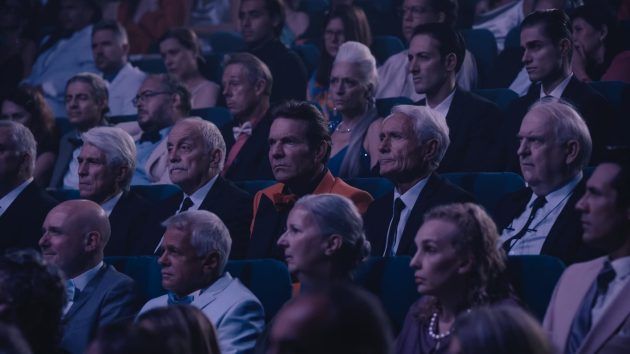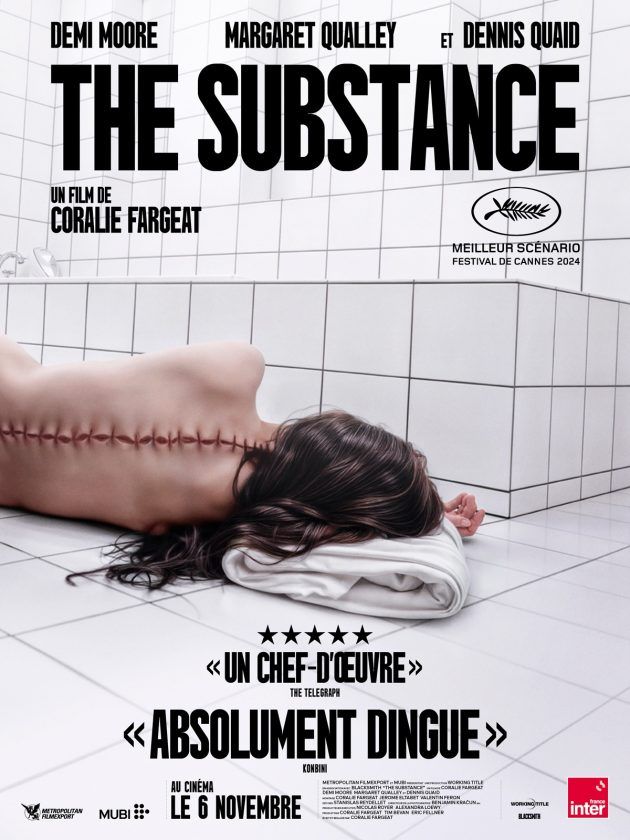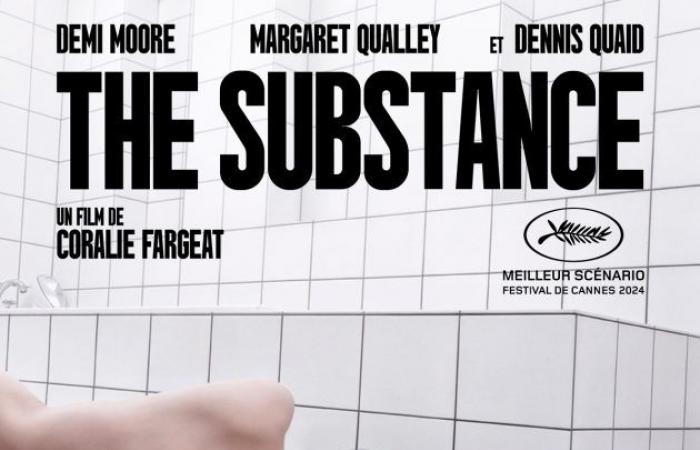women revenge
“Thank you for letting the monsters in”exclaimed Julia Ducournau during her speech at Cannes 2021, a few moments after receiving the Palme d’Or for Titanium. Three years later, the Cannes Film Festival has given pride of place, more than ever, to the genre and the monsters in competition with The Substance by Coralie Fargeat (another Frenchwoman, cocorico). Except that in truth, if Titanium was already radical, it is absolutely nothing compared to the bloody dive into the body horror of The Substance.
With Revengethe French filmmaker already placed the knobs very high in a long crescendo of horror and violence until a climax painting all the walls of a villa with blood. The best is not to reveal too much to make the most of the escalation of the story, but with his second film, Coralie Fargeat continues her gory momentum until almost a point of no return.
Strangely, The Substance however begins quite calmly, even slowly, alongside Elisabeth Sparkle. This former movie star who became the presenter of an aerobics show is fired in the first minutes by her producer (horrible Dennis Quaid) because of her age. Played by Demi Moore (the best role of her career?), Elisabeth, isolated, then comes across a mysterious product, The Substance, capable of generating another version of herself, younger, more beautiful, more perfect.
Elisabeth thus hopes to relaunch her life and overcome the prerequisites of a patriarchal society.but be careful, the rules of use are very strict and everything can get out of hand very quickly. It is from there that The Substance little by little takes an unexpected turn to better blow up in our faces.

demi, at the blood ball
Coralie Fargeat explains it very well in the note of intent of the press kit of The Substance : “It’s a film about women’s bodies. How women’s bodies are scrutinized, fantasized about, criticized in public space, “cut into pieces” by gazes. […] A prison that society has built around us and which has become a powerful instrument of control and domination. A prison we think we want for ourselves. And this film is a big cry: it’s time to blow it all up.”.
The story indeed rigorously depicts our obsession with control and our unhealthy preoccupation with the gaze of others (particularly that of men for women). It is in particular the case of Elisabeth Sparkle whose relationship with the body is increasingly difficult (a moving scene of preparation for a date revealing her visceral hatred of herself), not helped by a Hollywood industry where the importance of women and actresses is often relegated to the “freshness” of their physique.

A perfect way for Coralie Fargeat to continue to explore the condition of women in a world governed by men (and for men). The director thus studies the excesses of youthfulness, the absolute fear of aging, the eating disorders emanating from it and, ultimately, the atrocious and extreme consequences of a senseless search for eternal beauty. And if Fargeat films the body of Sue, the young version of Elisabeth perfectly played by Margaret Qualley, from every angle (rarely seen so many close-ups of buttocks in a feminist film), it is to better expose his point.
“In the film, bodies are tyrannized, ridiculed, destroyed, just as I am deeply convinced that society destroys women with all these rules that we have been taught to follow in silence”says the filmmaker. And indeed, by dwelling at length on Sue’s perfect body before making her doubt her own beauty (because of societal injunctions) and shattering the constraints to which she must conform, The Substance plays admirably with the codes of the encore to gradually deconstruct this frantic race for perfection, until it violently annihilates it.

double body horror
Multiplying very dirty close-ups and playing skillfully with its sound design to create a form of ambient unease (the sound of flesh, the aggressive cuts), The Substance then plunges into pure horror by summoning a whole section of cinema. The film is in fact drowning in references between The Fly by David Cronenberg, Carrie by Brian De Palma, The Thing de John Carpenter, Death suits you so well by Robert Zemeckis, Shining (et 2001) by Stanley Kubrick or even Mulholland Drive et Elephant Man by David Lynch (and the list could go on and on).
Except that Coralie Fargeat is fortunately not content with creating a simple contemporary pastiche. On the contrary, and this is one of the film’s great strengths, it always manages to take the small step aside necessary to make The Substance unique. Just when we think she has already reached the peak of her experimentation, the director goes a little further beyond the limitsthe hope of a fairy tale in the first half hour mutating into a macabre fable, into a film about witches and then monsters, all in a bloodbath surpassing understanding.

Exploding bodies, severed limbs, liquefied guts, torn skin, nightmarish protrusion… The Substance offers a real festival of metamorphosis breathtakingly realistic (the makeup and prosthetics department had a blast). And despite its very serious subjects, the film is all the more refreshing because Fargeat does not forget to maintain a fierce humor, the whole surfing on a grand-guignolesque atmosphere in the middle of its sensational outbursts of violence, giving it a much more important policy.
So obviously, the film is not totally perfect with its 2h20 on the clock (i.e. a duration undoubtedly a little too long) and some will clearly criticize its lack of subtlety. However, it’s impossible not to get excited about The Substance whose radicality carries away everything in its path in a big, daring and jubilant ride.











